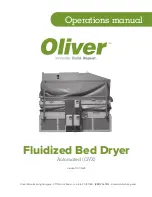
29
Water connection
To prevent leaks or water damage, you must observe the instructions in
this section.
If in doubt, have a technician connect the appliance.
The water supply and drain hoses can be routed to the left of right,
depending on installation conditions.
Do not use a used inlet hose. Only use the inlet hose supplied or one
which was purchased from an authorised specialist retailer.
Water supply
Do not allow the water supply hose to be:
– kinked or squashed
– altered or cut (strength no longer guaranteed).
Note the water pressure in the mains supply:
The water pressure should be between 50-900 kPa (0.5-9 bar) (at least
8 litres of water flow out per minute when the tap is turned on).
If the water pressure is higher, a pressure reducing valve must be fitted.
Connect the cold-water supply hose (
blue
union nut) to the cold water tap
with ¾" pipe thread.
Only tighten plastic screw connections by hand.
Do not remove the filter from the supply hose.
After connecting the water supply hose:
– Turn the tap on fully.
– Check the connections for leaks.
Water drainage
– Do not kink the drain hose or pull it lengthways.
– Height difference between the installation surface and the drain:
max. 90 cm, min. 50 cm.
Secure the connection with a 24-40 mm hose clamp (available from
specialist retailers).
Electrical connection
The washer-dryer must only be connected to an alternating current supply via
a properly installed earthed socket.
If a residual current circuit breaker is used, only use a type which displays this
symbol:
‚
.
Only this symbol guarantees compliance with the currently applicable
regulations.
The mains voltage must match the voltage specifications on the washer-dryer
(rating plate).
The connected load and fuse required are shown on the rating plate.
Make sure that:
– the mains plug fits the socket.
– the cable cross-section is adequate.
– the earthing system is properly installed.
– the appliance is not standing on the mains cable.
– the mains plug is accessible at all times.
Changes to the mains cable may only be carried out by a qualified electrician.
Do not use multiple plugs/adapters or extension cables.
Do not plug in or unplug the mains plug with wet hands.
Only pull the mains plug out by the plug itself.
Drainage into a siphon




































